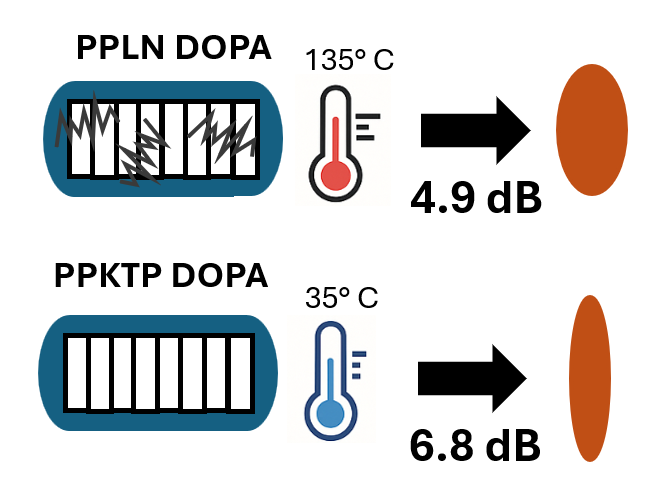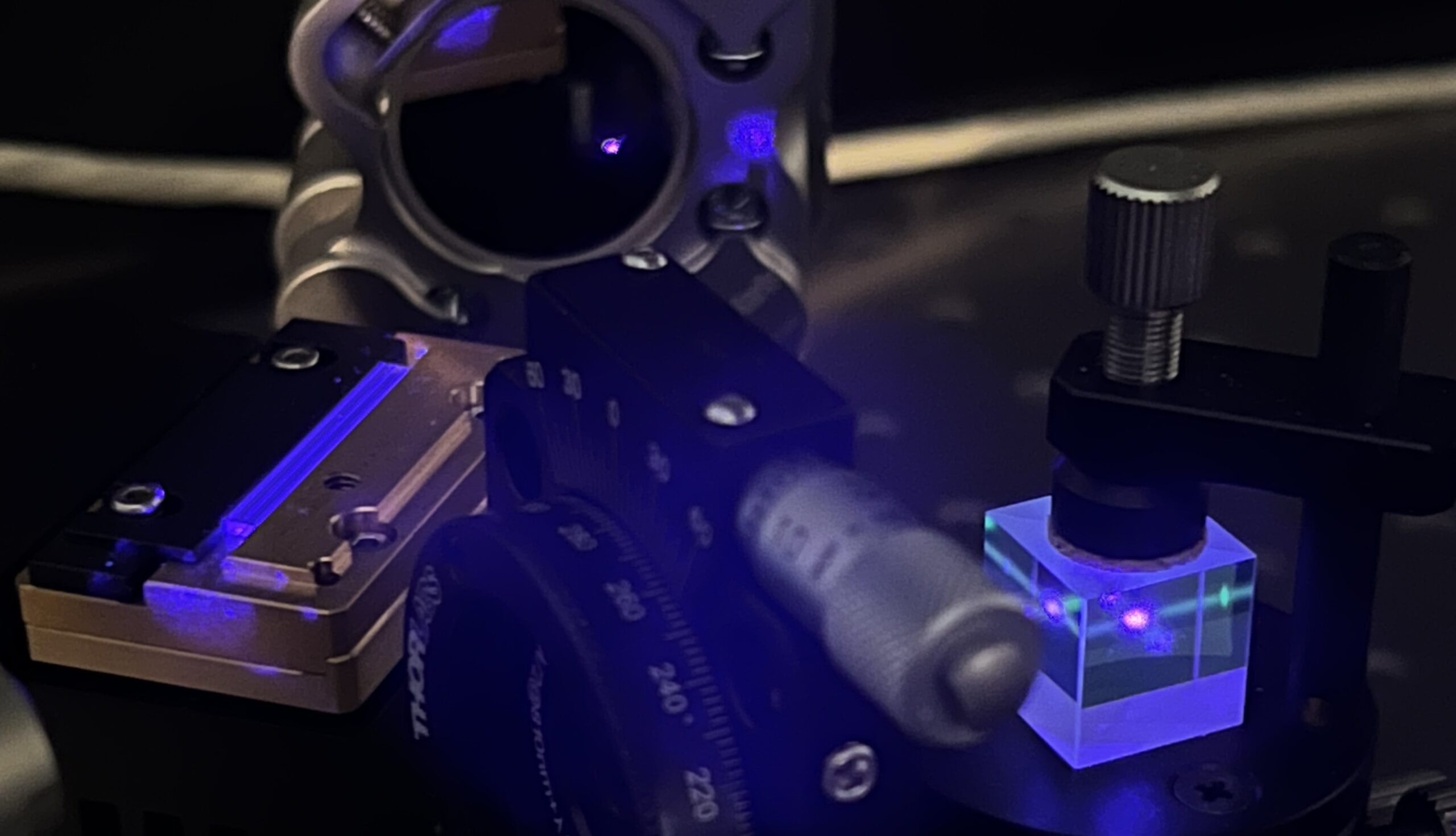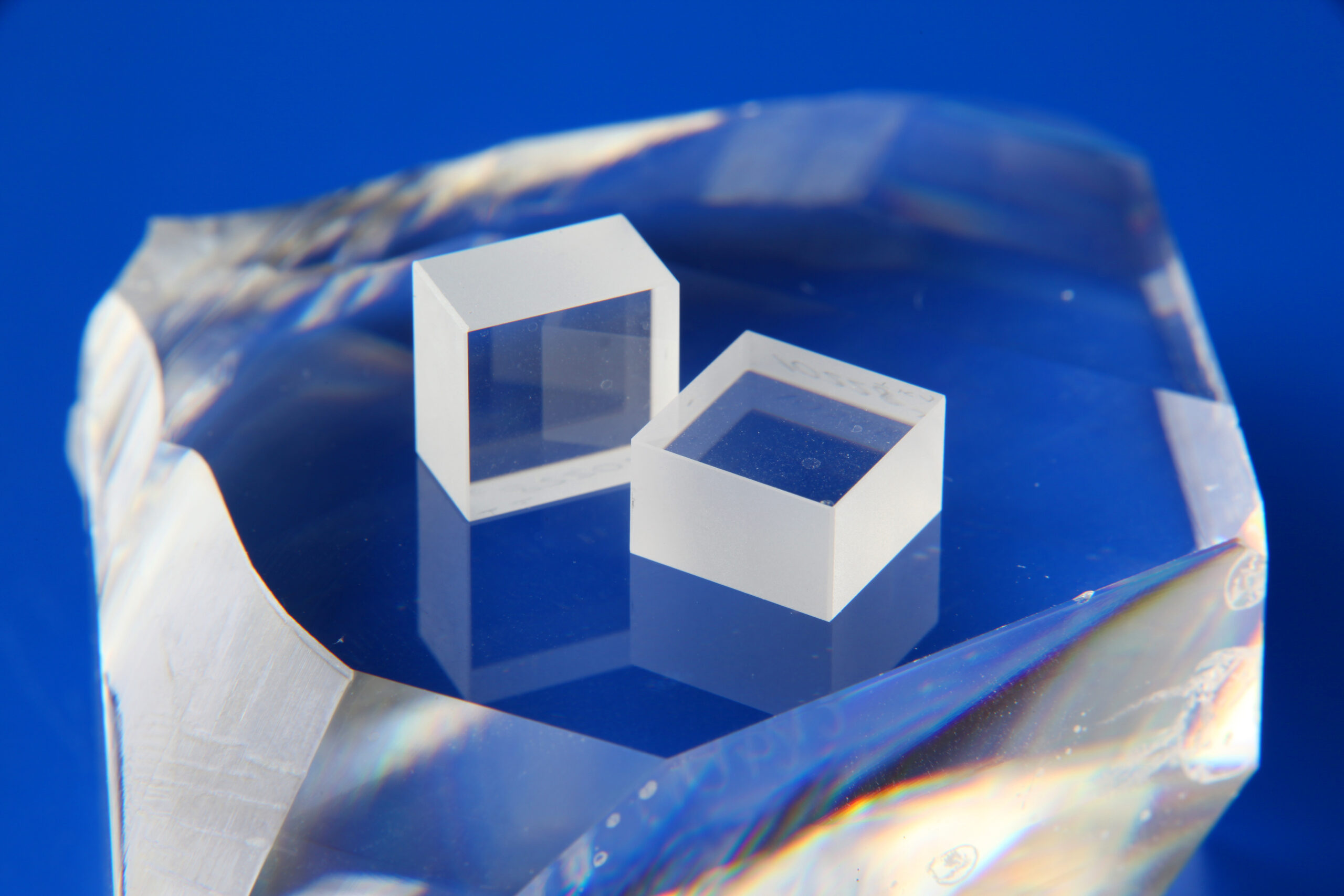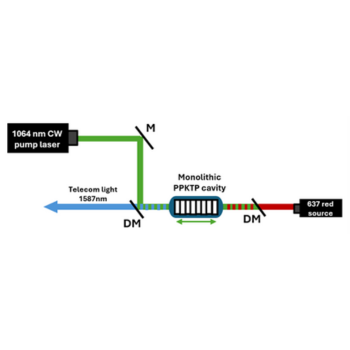Author: Ronen Shekel
Even the most stable laser isn’t perfectly quiet. The fact that light comes in discrete photons introduces statistical fluctuations known as shot noise, leading to the standard quantum limit for optical measurement precision.
However, quantum optics provides a workaround. A squeezed state redistributes uncertainty, shrinking noise in one property (phase or amplitude) below the shot‑noise floor while increasing it in the other. On a phase-amplitude diagram the round noise circle turns into an elongated ellipse. Such engineered low-noise light boosts the sensitivity of LIGO’s gravitational‑wave detectors [1], squeezed‑light magnetometers [2], and many other quantum sensing and communication applications.
A common method to generate squeezed light is through a Degenerate Optical Parametric Amplifier (DOPA). In a DOPA, a strong pump laser beam interacts with a nonlinear crystal, typically placed inside an optical cavity to enhance the interaction, and drives the generation of photon pairs. The phase‑sensitive nature of the process allows the cavity to reduce fluctuations along one quadrature while amplifying the orthogonal one. The strength of this interaction is characterized by its effective nonlinear coefficient; a higher value usually indicates a more efficient conversion process, which can translate to stronger squeezing for a given crystal length and pump power.
The Crystal Choice: Operating Temperature and Intrinsic Noise
Two prominent nonlinear materials for constructing DOPAs are periodically poled Potassium Titanyl Phosphate (PPKTP) and periodically poled Lithium Niobate (PPLN). PPLN has a higher nonlinear coefficient than PPKTP, suggesting it is inherently better for generating strong squeezing. However, practical operational requirements introduce crucial differences.
PPLN often suffers from a photorefractive effect when exposed to high-intensity laser light near room temperature. This effect involves the light-induced generation and migration of charge carriers within the crystal, creating internal electric fields that distort the crystal’s refractive index and degrade the quality of the transmitted laser beams. To mitigate photorefraction, PPLN-based devices are typically operated at high temperatures, such that the trapped charges have enough energy to become mobile again, averaging out the internal fields and mitigating the effect. In contrast, PPKTP-based DOPAs can operate efficiently near room temperature without significant photorefractive problems.
This difference in operating temperature has significant consequences for the ultimate noise performance. At elevated temperatures, the atomic lattice vibrates, resulting in microscopic acoustic waves propagating through the crystal. These waves randomly modulate the refractive index. This phenomenon, known as Guided Acoustic Wave Brillouin Scattering (GAWBS), introduces a fundamental source of phase noise that is directly dependent on the crystal’s temperature [3].
A direct experimental comparison by Wan et al. highlighted this critical trade-off [4]. Using identical 1550 nm DOPA setups, they found 6.8 dB of squeezing – that is, 6.8 dB of noise reduction below the standard quantum limit – for room-temperature PPKTP versus 4.9 dB using PPLN at 135°C. The superior squeezing performance of PPKTP, despite its lower nonlinear coefficient, was directly attributed to the reduced GAWBS-induced phase noise at its cooler operating temperature.

For the strongest phase squeezing, eliminating GAWBS matters more than the absolute value of the nonlinear coefficient. Indeed, record squeezing levels of 12 dB at 1550 nm and 15 dB at 1064 nm both used PPKTP [5, 6], underlining its exceptional low-noise properties.
Raicol: Precision Crystals for Quantum Light
Deep squeezing requires crystals with precisely controlled poling, ultralow absorption, and exceptional uniformity. Raicol’s PPKTP crystals are engineered to these exacting standards, with options for custom periodicities and aperiodic poling designs. For your next squeezed light source, we invite you to explore our products and consult with our team to identify the optimal crystal configuration for your specific applications.
References
[1] Aasi, Junaid, Joan Abadie, B. P. Abbott, Richard Abbott, T. D. Abbott, M. R. Abernathy, Carl Adams et al. “Enhanced sensitivity of the LIGO gravitational wave detector by using squeezed states of light.” Nature Photonics 7, no. 8 (2013): 613-619.
[2] Wolfgramm, Florian, Alessandro Cere, Federica A. Beduini, Ana Predojević, Marco Koschorreck, and Morgan W. Mitchell. “Squeezed-light optical magnetometry.” Physical review letters 105, no. 5 (2010): 053601.
[3] César, Jônatas Eduardo da Silva, A. S. Coelho, Katiuscia Nadyne Cassemiro, Alessandro de Sousa Villar, M. Lassen, P. Nussenzveig, and Marcelo Martinelli. “Extra phase noise from thermal fluctuations in nonlinear optical crystals.” Physical Review A—Atomic, Molecular, and Optical Physics 79, no. 6 (2009): 063816.
[4] Wan, Zhenju, Jinxia Feng, Yuanji Li, and Kuanshou Zhang. “Comparison of phase quadrature squeezed states generated from degenerate optical parametric amplifiers using PPKTP and PPLN.” Optics express 26, no. 5 (2018): 5531-5540.
[5] Mehmet, Moritz, Stefan Ast, Tobias Eberle, Sebastian Steinlechner, Henning Vahlbruch, and Roman Schnabel. “Squeezed light at 1550 nm with a quantum noise reduction of 12.3 dB.” Optics express 19, no. 25 (2011): 25763-25772.
[6] Vahlbruch, Henning, Moritz Mehmet, Karsten Danzmann, and Roman Schnabel. “Detection of 15 dB squeezed states of light and their application for the absolute calibration of photoelectric quantum efficiency.” Physical review letters 117, no. 11 (2016): 110801.
Do you have a question? Our experts will be happy to hear from you and advise you on the best product for you. Contact Us.
Have you already subscribed to our YouTube channel? Don’t miss out—subscribe now for exclusive content and updates from our company.






